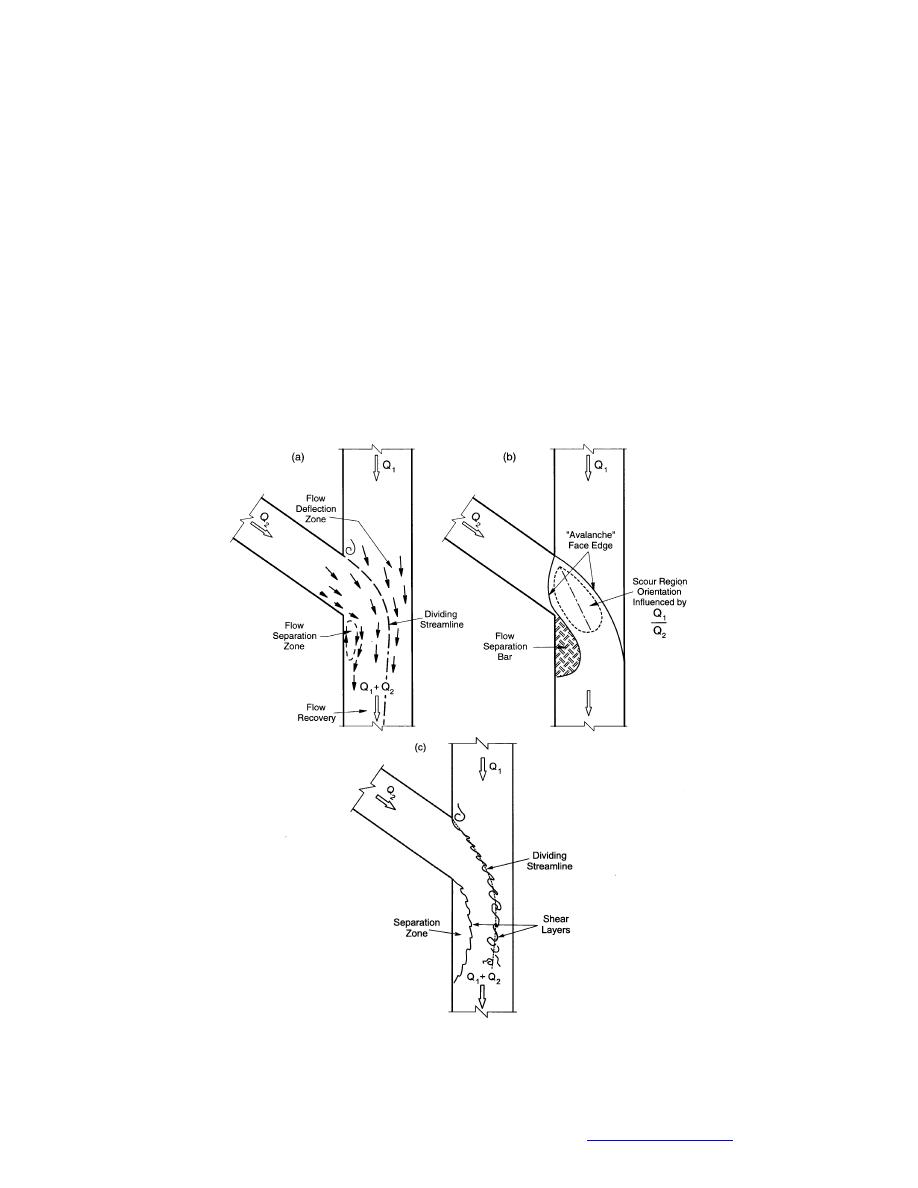
nomena are also involved in such flow situations. The relative importance of the
roles played by confluences likely varies with the drainage structure of a water-
shed, the way ice forms and moves through a watershed, and the local geomor-
phic features of the confluence region itself.
CONFLUENCE MORPHOLOGY AND FLOW
Confluence morphology varies with differences in the relative magnitudes of
water discharge, sedimenttransport rate, and sediment size of the confluent chan-
nels. Taken together, these factors are embodied in the sizes and slopes of the con-
fluent channels. On the basis of channel size and slope, confluences can be dis-
cussed in terms of the following two general morphologic types:
Confluences of concordant bed channels. The bed levels of the two confluent
channels are at about the same level and sufficiently similar in slope, so that
water and sediment merge without deposition of sediment in the confluence.
As depicted in Figure 4a and b, which show the main flow and bathymetric
Figure 4. Schematic of channel confluence with concordant bed levels: (a)
main flow features; (b) main bathymetric features; (c) illustration of the shear
layers.
9
Back to contents page



 Previous Page
Previous Page
